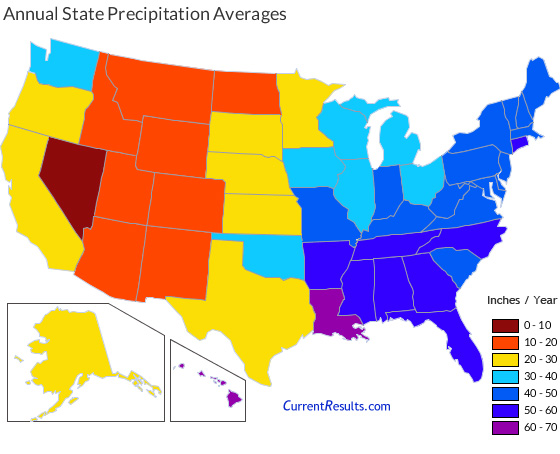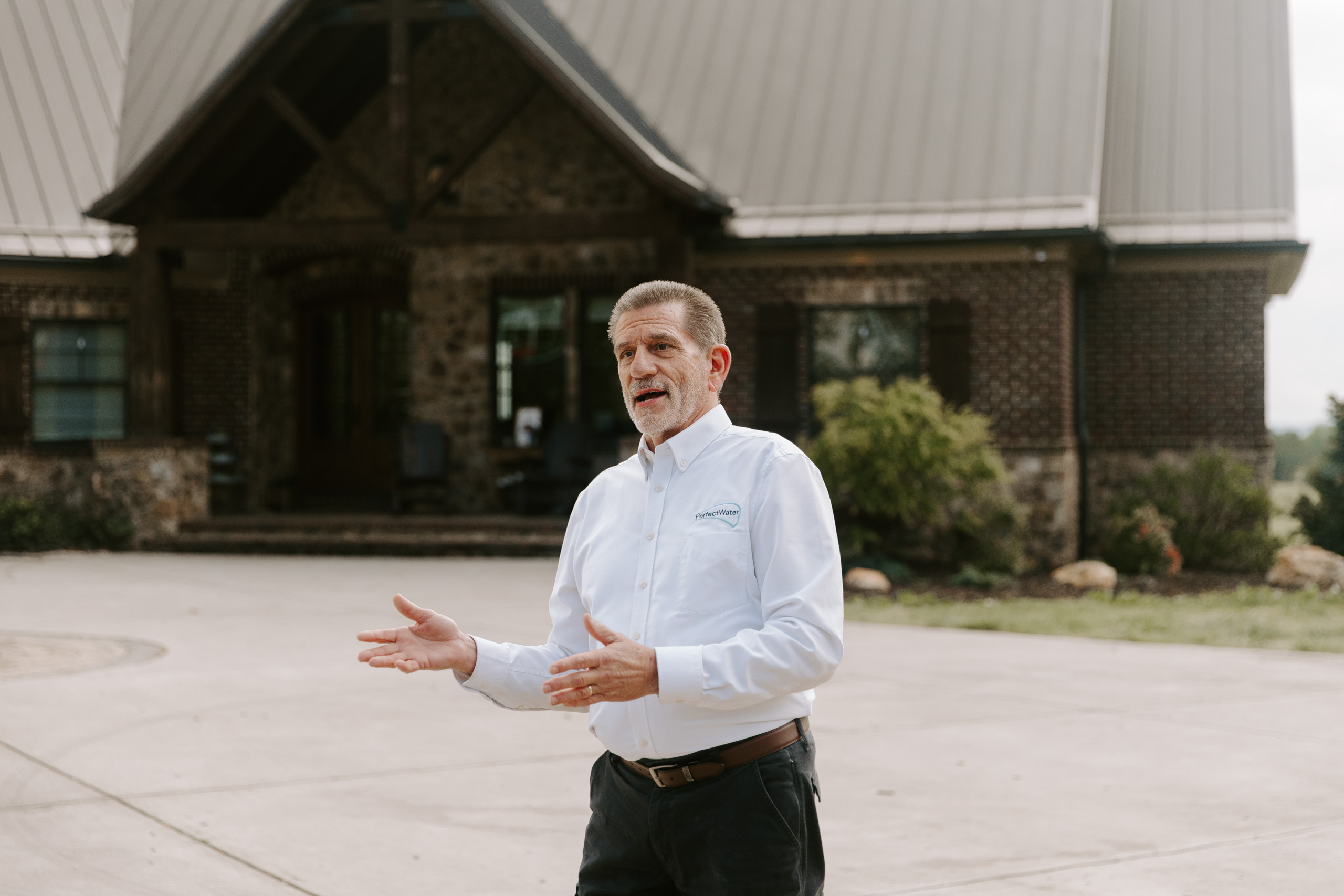Top 10 Questions About Rainwater Harvesting for Your Home - ANSWERED

Rainwater Harvesting for Complete Home Use
Are you considering rainwater harvesting as the primary potable water source for your home? If so, you probably have some questions.
This is a guide to answer the top 10 questions about rainwater harvesting. This IS NOT a guide about rain barrels for garden-only applications – we are speaking specifically about using captured rainwater for everything in your home, drinking, washing, cooking, bathing – everything.
1. Is harvested rainwater good and safe for my family to drink?
Yes. 100%. Rainwater harvesting provides water that is healthy, safe, and tastes great.
If properly designed and built, rainwater harvesting systems provide high-quality potable water. There are many families in the U.S. that use harvested rainwater as their primary potable water source.
But the design and build refer to more than simply the post-storage filtration panel, the entire SYSTEM must work together seamlessly – from the rooftop to the faucet. If one stage of the process is handled poorly, it can cause a domino effect that disrupts the rainwater harvesting system.
For instance, if a compatible roof material is not utilized, or if the pre-storage filter is being used in a bad application, or if the system is not sealed properly, these can all lead to an unsuccessful system.
2. In comparison to municipal water quality and well water quality, where does rainwater harvesting stand?
One of the top reasons why people are choosing rainwater harvesting for their homes is due to the excellent quality of collected rainwater.
As rain is falling to the ground, it will have just exited nature’s big distiller through the cycle of evaporation – this purifies the rainwater. Before reaching the ground, rainwater is the purest naturally-found water on earth.
Rainwater is free of inorganic contaminants and chemicals. While falling through the sky, some air pollutants can be picked, but this is trivial and easily removed in most of the United States. The rainwater then falls onto the catchment surface, the rooftop, where it comes in contact with some organic contaminants.
Organic contaminants such as bird droppings, leaves, dust, twigs, and dirt can seem very bad for the rainwater, completely ruining the purity, but in reality, these contaminants are simple to remove – without chemical additives.
How? A rainwater harvesting system is more than simply storing rooftop water. From the downspouts to the faucet, the rainwater harvesting system is constantly making the captured rainwater better. More on this in questions 3 and 4.
Compared to municipal water, rainwater harvesting has no added chemicals or contaminants. It is naturally fresh and tastes great. Rainwater is also free of calcium and magnesium which makes up water hardness.
Compared to well water, rainwater harvesting is not exposed to harsh iron or sulfur deposits which can ruin well water. A properly-designed rainwater system is, also, always eliminating bacteria – well water often goes untreated. And as stated above, rainwater is naturally soft, unlike most well water.
3. What about the contaminants on the roof?
Contaminants on rooftops are predominantly organic. Twigs, leaves, bird droppings, dust, dirt, and other organic contaminants make up the majority, and while they may seem very bad, they are rather easy to remove.
Here’s a fact I want you to think about, all freshwater has been rainwater at some point due to the hydrological cycle. What does this mean? It means that municipal water and well water have encountered the same organic contaminants that are of concern in regards to rainwater harvesting.
In fact, municipal and well water are likely to have been exposed to many more contaminants than the organic contaminants on a residential rooftop.
Stormwater, which is the runoff that can become municipal and well water, is exposed to parking lots, roadways, industrial contaminants, oils, waste, sewage, chemicals, and more.
When you take a step back and look at water as a whole, it can give some perspective on the contaminants that one’s rooftop rainwater would encounter.
4. What is the quality of the stored rainwater?
This is in an excellent question. It is also one of the most amazing things about rainwater harvesting. The quality of stored rainwater is very good; far superior than most assume. A successful rainwater harvesting system will maintain clear, odor-free, and slime-free water while in storage.
How is this possible? Through the brilliance of rainwater harvesting – system design is key here.
Through a controlled design, the rainwater is collected on a well-suited roof (more regarding roof material on question 7), sent through the downspouts and conveyance, and into a pre-storage filter before entering the storage.
The pre-storage filter is one of the key components in maintaining stasis in rainwater harvesting storage. It removes any large debris, dirt, and other unwanted contaminants from entering, along with highly oxygenating the rainwater. The pre-storage filter is generally made from a stainless-steel mesh and never needs replacement.
After going through the pre-storage filter, the rainwater enters the tank through a smoothing inlet, which diverts the water upward and outward from within the tank. Why is this important? It helps to not disturb the biofilm which lines the bottom of the tank.
What is the biofilm? The rainwater harvesting storage biofilm is a naturally forming layer of bacteria that promotes a healthy tank environment by removing contaminants that enter the storage that are too small for the pre-storage filter.
Rainwater harvesting water-storage quality is very important. Remember, a successful rainwater harvesting system should provide clear, odor-free, and slime-free water while in storage.
5. What if we leave home for multiple weeks or months?
The rainwater harvesting system will continue to work properly. This is possible because the water will continue to turnover and be re-oxygenated every time it rains. Rainwater will exit the storage through the overflow device, while fresh, oxygenated rainwater will enter.
Not only does the water turnover benefit the storage ecosystem, but also the other storage factors mentioned such as the biofilm.
6. Does it rain enough to supply my whole home?
It depends where you are in the country. East of the Mississippi river? More than likely, yes. But even in areas where there isn’t enough rain to supply 100% of the water supply, it can still supplement water usage.
What is your annual rainfall? Check out the graphic below to get a basic idea of what the annual rainfall is in your part of the country. This is based off 30-year rainfall data from NOAA. Where we are based, Knoxville and Nashville, Tennessee (TN) experience about 50 inches of annual rainfall – which is plenty for a normal-sized home and water usage.

Here’s the deal, like stated above, rainwater harvesting can either fully supply your home, or at least supplement the water usage which is also great, and gives you a reserve water source.
Automatic crossovers to a secondary water source are also available.
7. Do I need a special roof type for rainwater harvesting?
Most roof types work great with rainwater harvesting. Tin, slate, ceramic, and tile are excellent roof materials due to the smooth surface; asphalt shingles also work with rainwater harvesting.
The problem lies with the manufacturing process of some these materials mentioned that includes the application of biocides on the material. Biocides can disrupt the stasis of a rainwater harvesting system, causing system-wide failure.
Wood or shake roof types are not compatible with rainwater harvesting. The contaminants that grow and leach into the water disturb the rainwater harvesting system causing poor water quality.
A good qualification to look for is if the material is certified by NSF P151 (NSF P151 is the certification for rooftop rainwater harvesting coating materials), and/or ANSI/NSF Standard 61 (a general standard that applies to materials that encounter potable water).
We recommend checking with a rainwater harvesting professional to determine, without a doubt, that the roof material you plan to use will work with a potable rainwater harvesting system.
8. Is the water pressure good?
Yes! Rainwater harvesting systems have a great benefit of using powerful 1/2 or 1 horsepower pumps with little rise needed to reach the household plumbing – You have complete control over water pressure.
9. How does the rainwater harvesting system connect my house?
Directly to the household plumbing! No special plumbing is needed for rainwater harvesting.
What about the other ways that rainwater harvesting directly affects your home? The filtration panel is much smaller than many would assume. It is normally about 30 inches by 30 inches, with a depth of about 5 inches.
The panel can also provide an automatic crossover to a secondary water source. This is directly tied in with a well water or municipal water line that only turns on when the rainwater harvesting storage is running low, and then automatically kicks off after the next rain event.
10. Is rainwater harvesting illegal?
No, this is a common misunderstanding. In fact, in the 50 states, Colorado and Utah are the only states that put significant restraints on rainwater harvesting.
Most states welcome rainwater harvesting and even encourage it. Rainwater harvesting is a great method for stormwater management.
(Bonus Question) What Happens if our Rainwater Runs Out?
This is rarely the case as we always pull 100-year rainfall data for the homes we service. This helps us have an incredible understanding of the amount of rain that a home should receive, based on its location.
There are two major solutions to the case of prolonged drought: Automatic Crossover & the Fill Port.
Automatic crossover occurs when, in the case of an extremely prolonged drought, the homeowner can switch back over to a secondary water source such as well or city water.
The Fill Port is a great alternative as well and allows services such as a fire truck to deliver water to the home that needs it. All the fire truck has to do is pour water into the tank through the fill port and you are good to go!
Read more about what happens if your rainwater runs out.
Ready to Take Control of Your Water Supply?
Don’t wait for water shortages or unreliable sources to disrupt your life. With our Rainwater Harvesting systems, you can enjoy a sustainable, reliable, and completely self-sufficient water solution tailored to your home’s needs.

